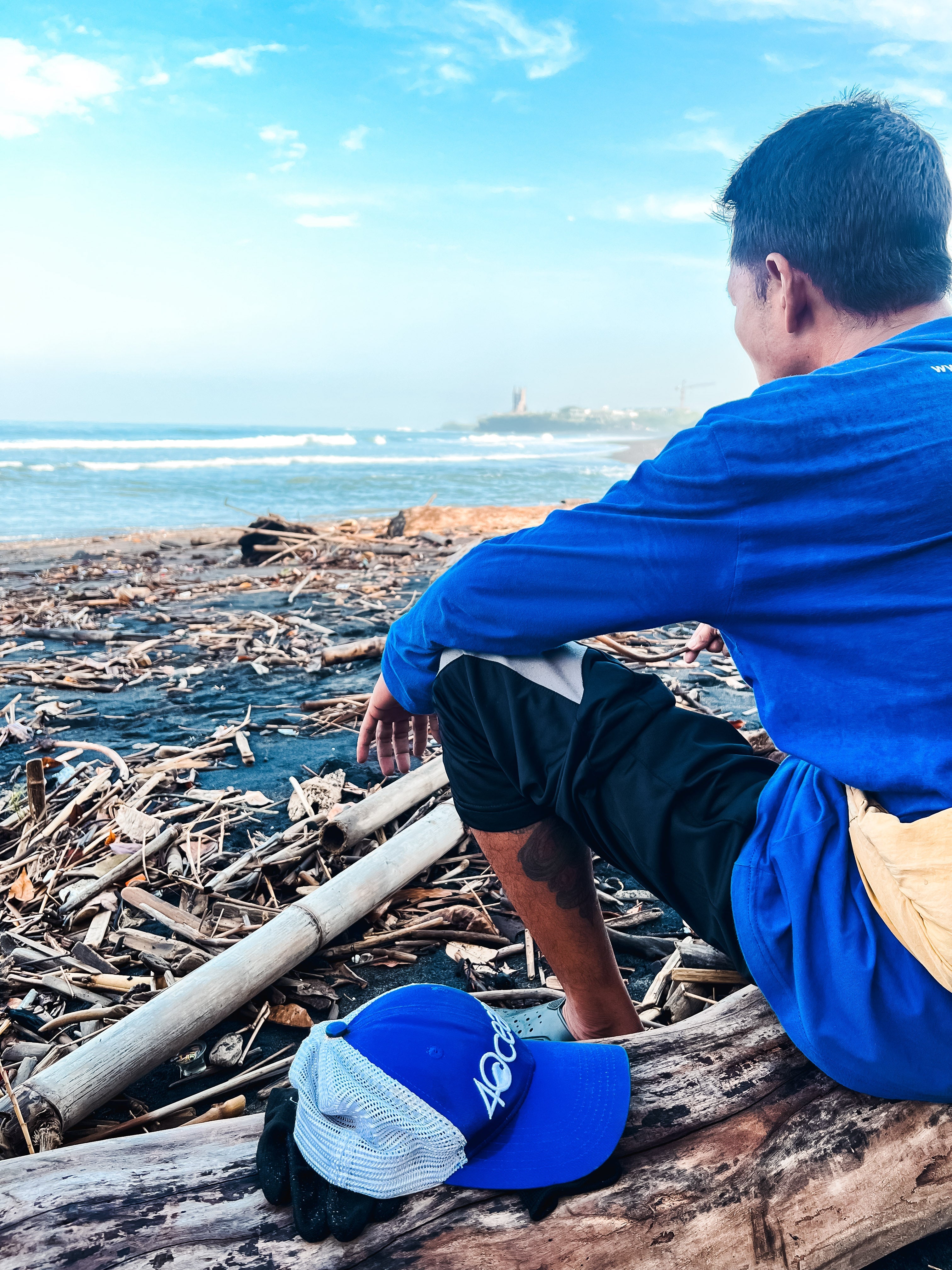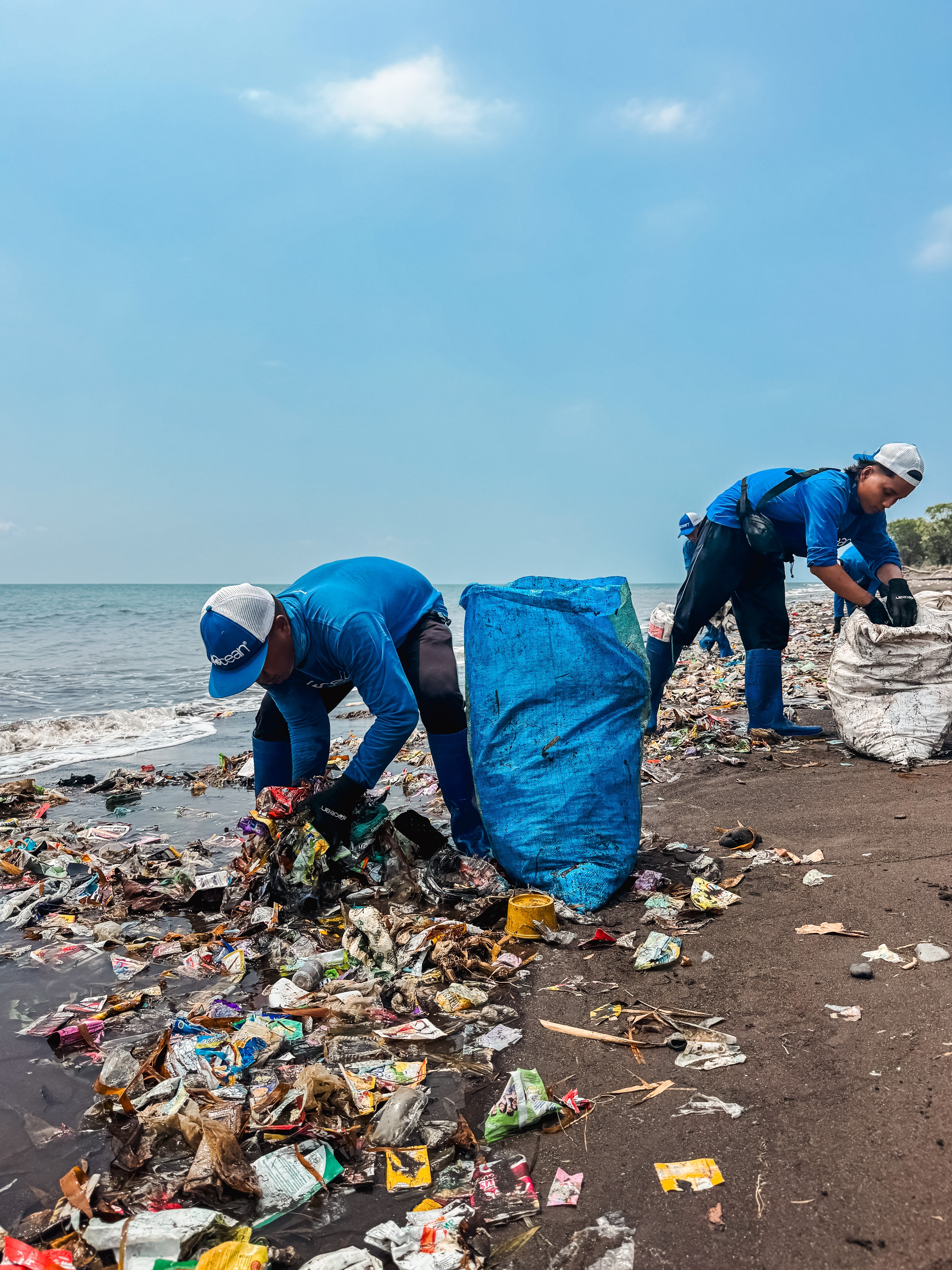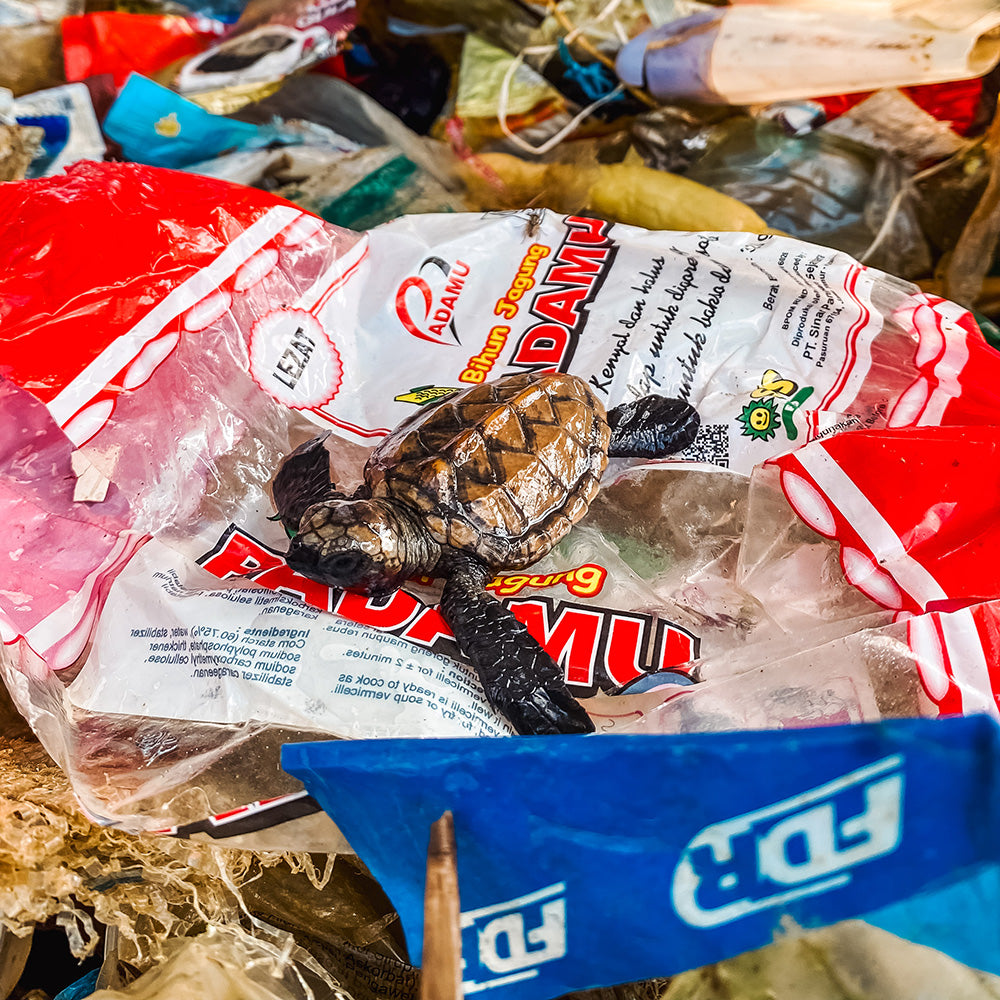5 MIN READ
05-28-2025
Inside 4ocean's Processing Plant: How We Sort Tons of Ocean Plastic Daily
Ahmad Fasta, 4ocean Jembrana Content Correspondent
Meet the Jembrana crew racing against the tide to process thousands of pounds of marine debris by hand
The 4ocean warehouse in Jembrana, Bali, has become a battleground against marine debris. On April 30, 2025, the sorting team clocked in for another long day, surrounded by mountains of waste delivered from the field—especially the ocean team, whose daily pickups bring in between 5,000 to 7,000 pounds of marine debris. The space is now packed wall to wall with heavy sacks of soaked, tangled, barnacle-encrusted trash.
Today alone, the team manually sorted an incredible 8,299.87 pounds of marine waste.
Awaludin, Emil Aziz, Mahfud, and the rest of the dedicated crew worked steadily throughout the day, moving from one sack to the next with focus and teamwork. They emptied sack after sack onto the sorting table, revealing an endless mix of PET bottles, brittle plastic bags, tangled ropes, food wrappers, plastic spoons, straws, and more. Many items had clearly spent a long time drifting in the ocean—the kind of debris that tells a story just by the barnacles stuck to it.
Despite the smell, the soggy weight, and the occasional surprise hidden inside the bags, the crew stayed upbeat. Their laughter echoed between the walls of the packed warehouse as they moved with focus and rhythm—each member knowing that every sorted bottle or shredded net brought the ocean one step closer to healing.
“The work is hard, and the waste smells terrible—but we’re proud to be part of something bigger,” one crew member shared. “Every sack we open is a small part of saving the sea.”
The biggest challenge they face is speed. With limited space and no area for drying waste, wet debris can pile up fast. Some items are awkward or tough to handle, but safety remains a top priority. The team leans on clear communication, stamina, and careful coordination—no special machines, just hands, heart, and a shared mission.
As more deliveries arrive each day, the Jembrana crew continues to adapt. They're prioritizing faster sorting and tighter organization inside the warehouse, keeping pathways clear so operations don’t grind to a halt. It's a daily race, but one they're committed to winning.
Because at the end of the day, it’s not just waste—it’s proof that the fight for our oceans is happening right now, one piece of plastic at a time.
The Waste Processing Journey
Before diving into our latest visit, here’s a look at how plastic waste is processed at our facility—from sorting to shredding and washing.
Swipe through to see each step:
- Sorting: Crew members separate plastic waste by type, grade, and color.
- Shredding: Sorted plastics are fed into the shredder, breaking them down into fine-grained material.
- Washing: The material is rinsed and placed in a wash tank that separates plastics by density.
- Final Processing: Clean, processed plastic is now ready to be repurposed into new products.





















